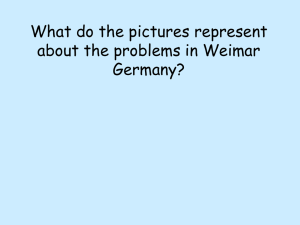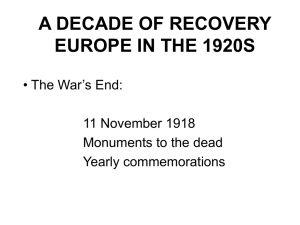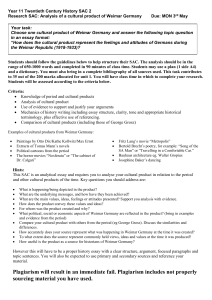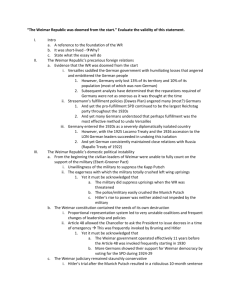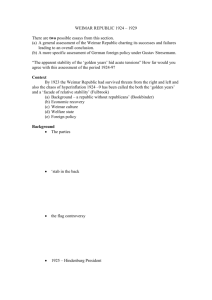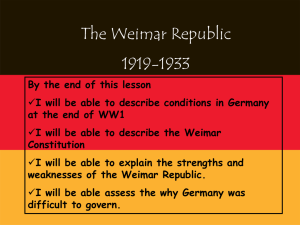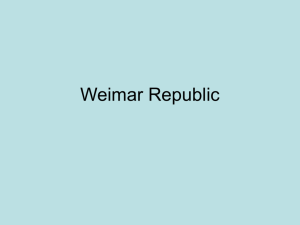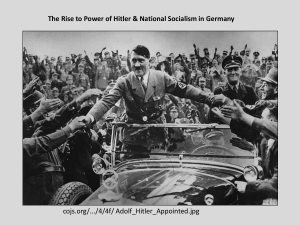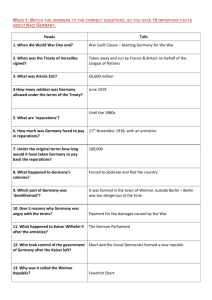The Second Reich Revision sheet
advertisement
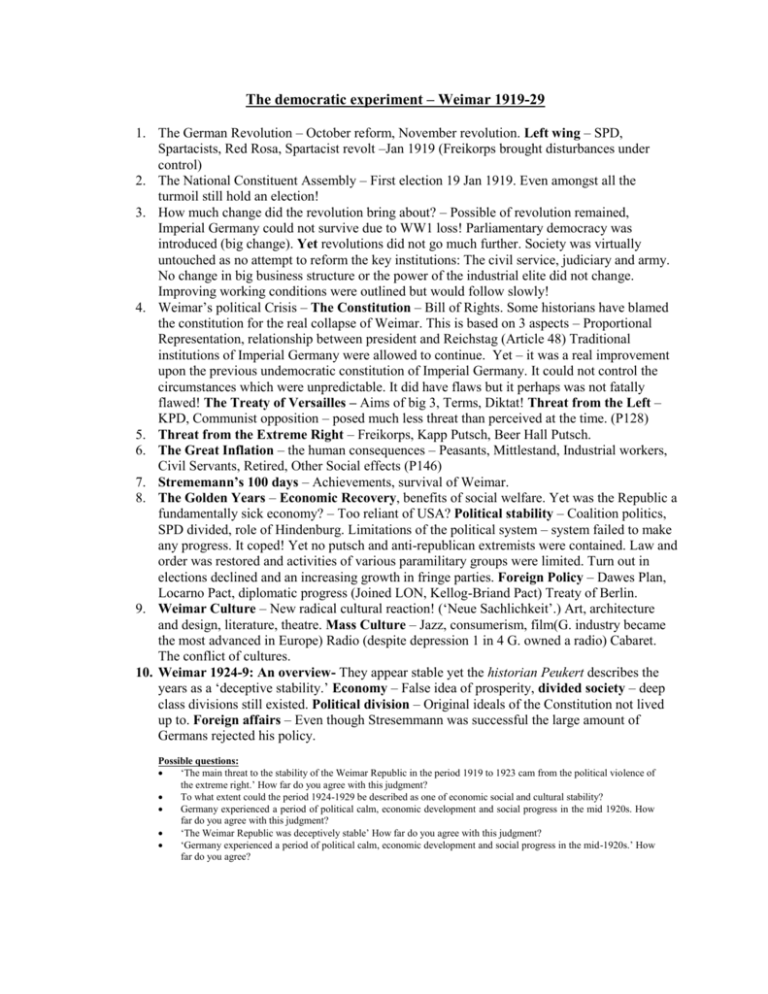
The democratic experiment – Weimar 1919-29 1. The German Revolution – October reform, November revolution. Left wing – SPD, Spartacists, Red Rosa, Spartacist revolt –Jan 1919 (Freikorps brought disturbances under control) 2. The National Constituent Assembly – First election 19 Jan 1919. Even amongst all the turmoil still hold an election! 3. How much change did the revolution bring about? – Possible of revolution remained, Imperial Germany could not survive due to WW1 loss! Parliamentary democracy was introduced (big change). Yet revolutions did not go much further. Society was virtually untouched as no attempt to reform the key institutions: The civil service, judiciary and army. No change in big business structure or the power of the industrial elite did not change. Improving working conditions were outlined but would follow slowly! 4. Weimar’s political Crisis – The Constitution – Bill of Rights. Some historians have blamed the constitution for the real collapse of Weimar. This is based on 3 aspects – Proportional Representation, relationship between president and Reichstag (Article 48) Traditional institutions of Imperial Germany were allowed to continue. Yet – it was a real improvement upon the previous undemocratic constitution of Imperial Germany. It could not control the circumstances which were unpredictable. It did have flaws but it perhaps was not fatally flawed! The Treaty of Versailles – Aims of big 3, Terms, Diktat! Threat from the Left – KPD, Communist opposition – posed much less threat than perceived at the time. (P128) 5. Threat from the Extreme Right – Freikorps, Kapp Putsch, Beer Hall Putsch. 6. The Great Inflation – the human consequences – Peasants, Mittlestand, Industrial workers, Civil Servants, Retired, Other Social effects (P146) 7. Strememann’s 100 days – Achievements, survival of Weimar. 8. The Golden Years – Economic Recovery, benefits of social welfare. Yet was the Republic a fundamentally sick economy? – Too reliant of USA? Political stability – Coalition politics, SPD divided, role of Hindenburg. Limitations of the political system – system failed to make any progress. It coped! Yet no putsch and anti-republican extremists were contained. Law and order was restored and activities of various paramilitary groups were limited. Turn out in elections declined and an increasing growth in fringe parties. Foreign Policy – Dawes Plan, Locarno Pact, diplomatic progress (Joined LON, Kellog-Briand Pact) Treaty of Berlin. 9. Weimar Culture – New radical cultural reaction! (‘Neue Sachlichkeit’.) Art, architecture and design, literature, theatre. Mass Culture – Jazz, consumerism, film(G. industry became the most advanced in Europe) Radio (despite depression 1 in 4 G. owned a radio) Cabaret. The conflict of cultures. 10. Weimar 1924-9: An overview- They appear stable yet the historian Peukert describes the years as a ‘deceptive stability.’ Economy – False idea of prosperity, divided society – deep class divisions still existed. Political division – Original ideals of the Constitution not lived up to. Foreign affairs – Even though Stresemmann was successful the large amount of Germans rejected his policy. Possible questions: ‘The main threat to the stability of the Weimar Republic in the period 1919 to 1923 cam from the political violence of the extreme right.’ How far do you agree with this judgment? To what extent could the period 1924-1929 be described as one of economic social and cultural stability? Germany experienced a period of political calm, economic development and social progress in the mid 1920s. How far do you agree with this judgment? ‘The Weimar Republic was deceptively stable’ How far do you agree with this judgment? ‘Germany experienced a period of political calm, economic development and social progress in the mid-1920s.’ How far do you agree?
